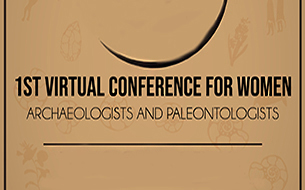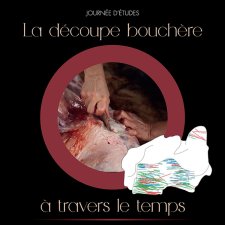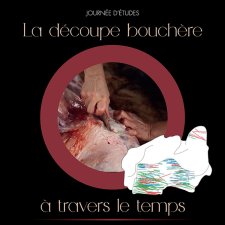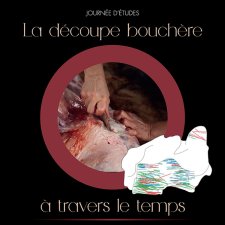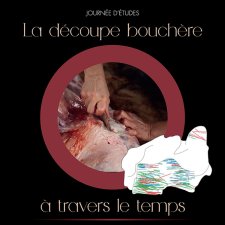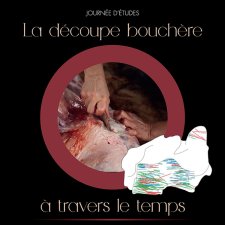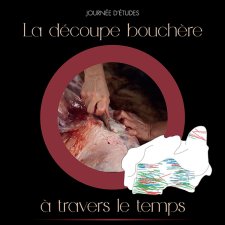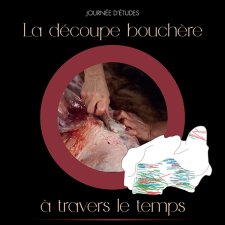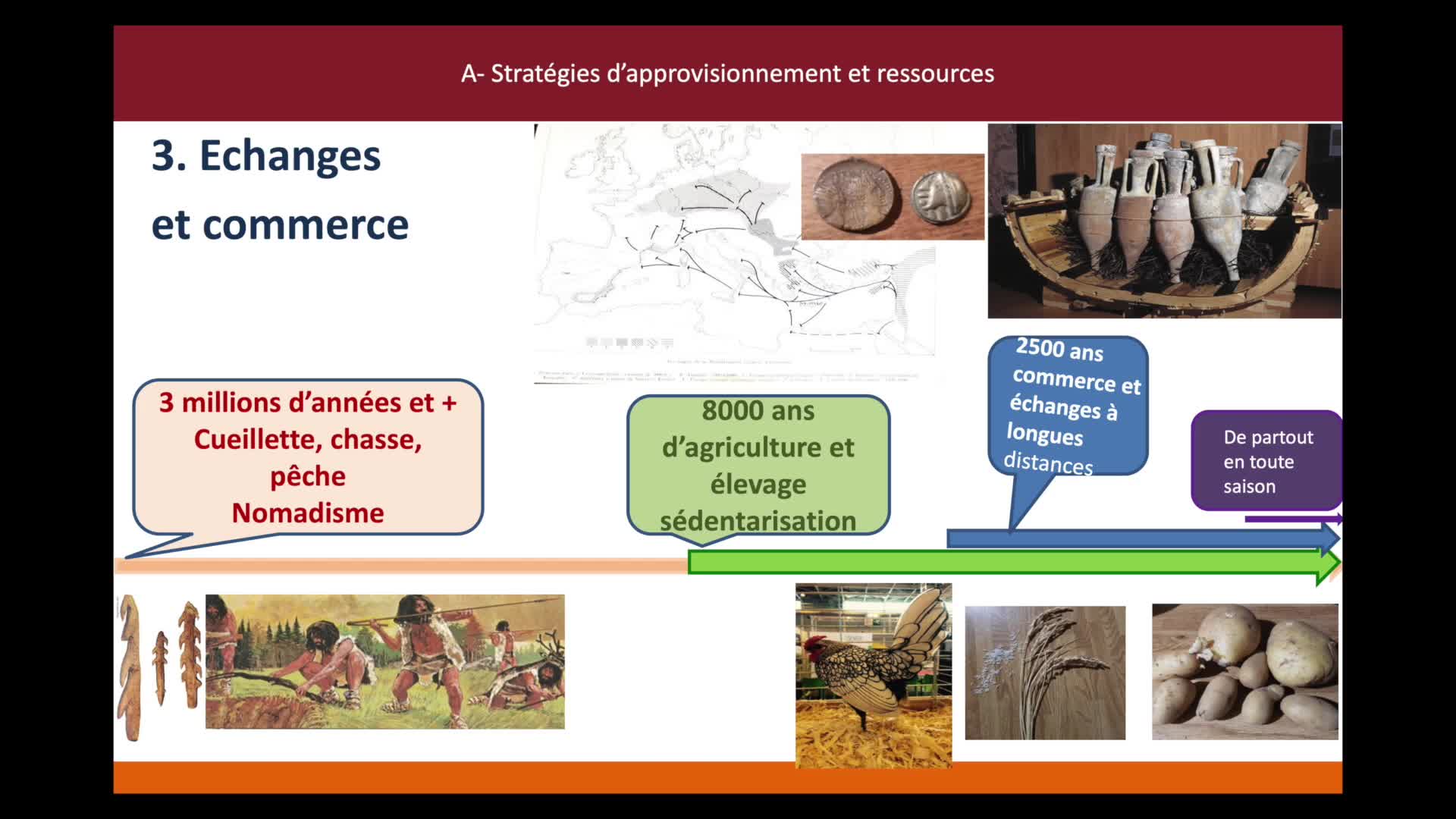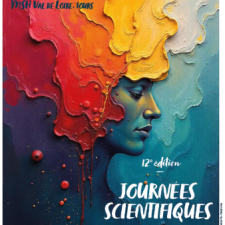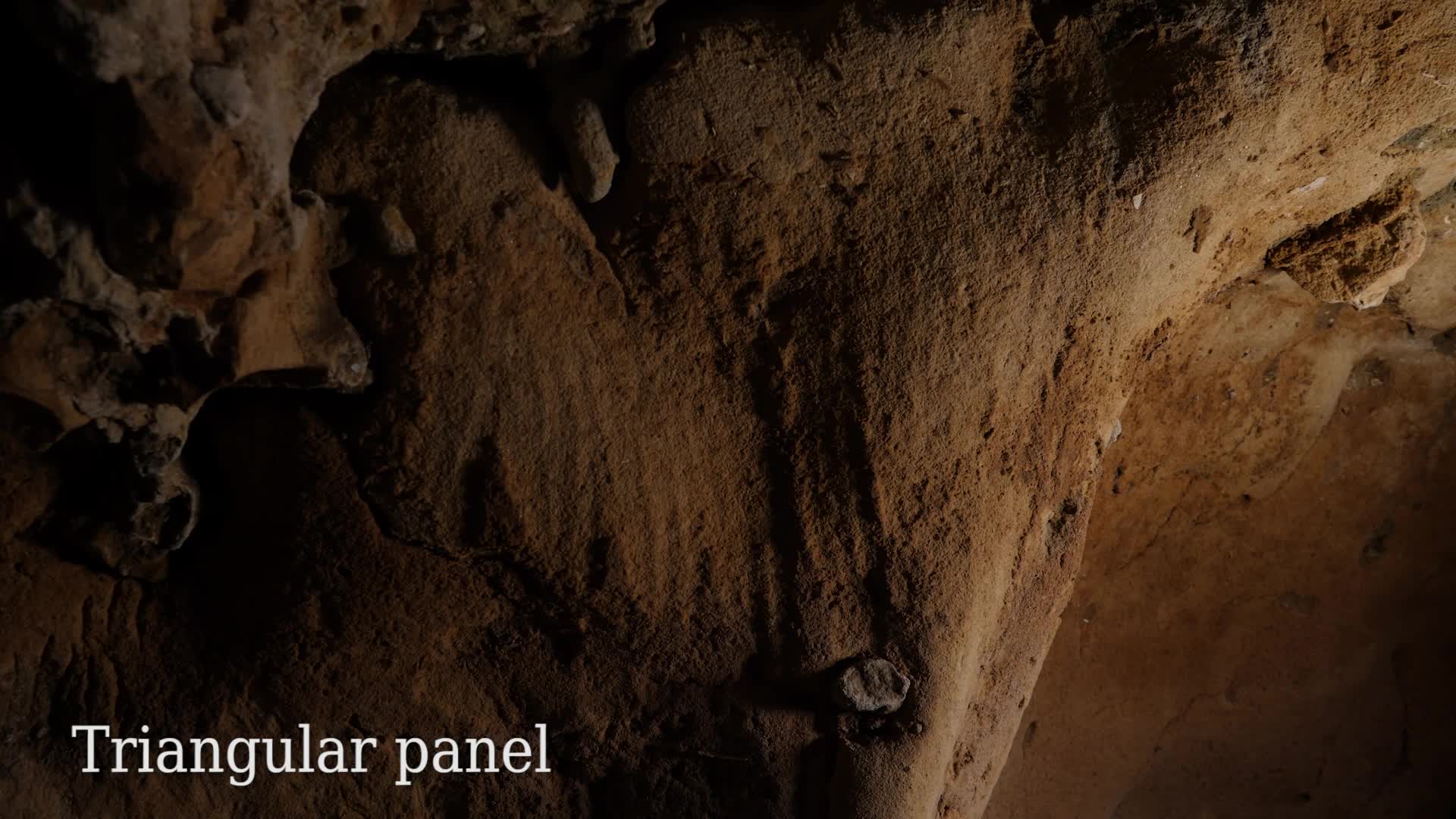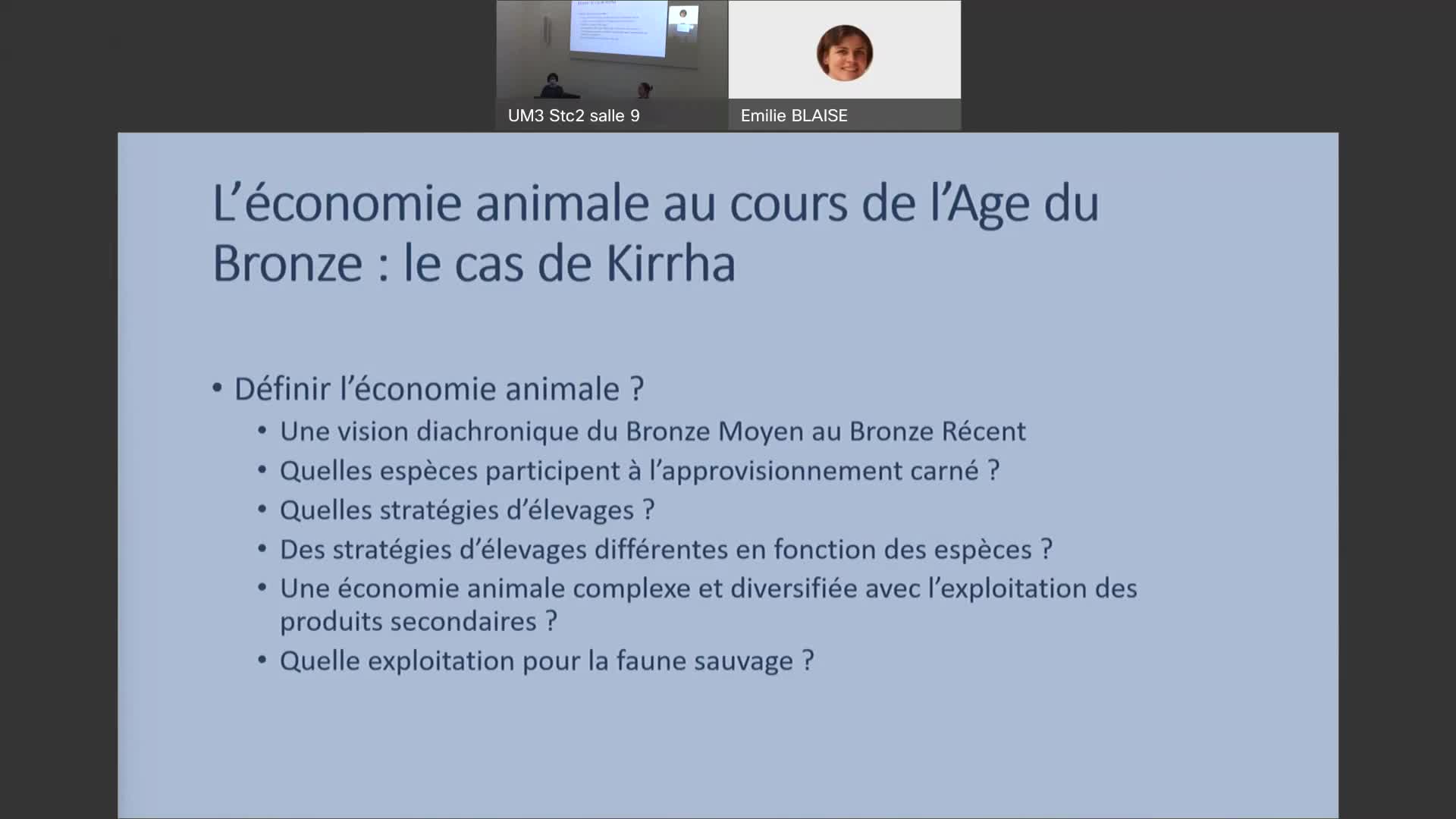Notice
New insights into the study of past populations: archeozoology and cementochronology in the Middle Palaeolithic / Audrey Roussel
- document 1 document 2 document 3
- niveau 1 niveau 2 niveau 3
Descriptif
New insights into the study of past populations: archeozoology and cementochronology in the Middle Palaeolithic / Audrey Roussel, in colloque "1st Virtual Conference for Women Archaeologists and Paleontologists. Nouveaux apports à l’étude des populations et environnements passés" organisé par le laboratoire Travaux et Recherches Archéologiques sur les Cultures, les Espaces et les Sociétés (TRACES) de l’Université Toulouse Jean Jaurès et le laboratoire Paléontologie Évolution Paléoécosystèmes (PALEVOPRIM) de l'Université de Poitiers, sous la responsabilité scientifique de Julie Bachellerie, Ana Belén Galán López (Traces), Émilie Berlioz et Margot Louail (Palevoprim). Université Toulouse Jean Jaurès, 8-9 mars 2021. [Conférence enregistrée à distance].
Session 3 : Exploitation of natural resources and raw materials, subsistence strategies.
The upper Middle Paleolithic is marked by climatic changes of great amplitude (glacial and interglacial periods) which have affected the environment of human communities living in Western Europe and, consequently, their behavior. The problems of group organization in the face of seasonal variations in resources in the environment (seasonality) and spatial variations in biotopes (territorial mobility) are therefore central to our understanding of their lifestyles. In recent years, archaeological research has led to questioning models based on the hypothesis of opportunistic practices of big game exploitation, with little planning, in favor of more complex strategies (collective and specialized hunts, storage and deferred consumption). South of France is rich of archaeological sites and many dynamics of the research carried out there. Is a particularly interesting space to apprehend the rhythms and ruptures in the adaptations ofpast prehistoric societies in the face of environmental changes and for identifying adaptive responses on a regional scale. To provide new answers to these problems, the approach used in this doctoral work combines classic archeozoological methods (demography, transport, seasonality) with a technique for microscopic analysis of animal teeth, cementochronology. This method provides more precise information on the biological ages of individuals and their seasonality of slaughter.
The results presented here are based on the study of the dental remains of ungulates (deer, fallow deer, ibex, aurochs, and bison) from the Canalettes (Aveyron), Rescoundudou (Aveyron) and Mandrin (Drôme) sites. Through this study, we propose a reflection onour current knowledge of this prehistoric period, as well as the contribution of new methods to our understanding of faunal assemblages of anthropic origin.
Thème
Documentation
Références documentaires
REGGIO, Adrien, HELARD, Boris, ROUSSEL, Audrey et al. (2017). Une occupation néolithique aux pieds des Monts de Vaucluse, le site de La Boudine à Saumane-de-Vaucluse, Courrier scientifique du Parc naturel régional du Lubéron et de la réserve de biosphère Luberon-Lure. [En ligne : https://hal.archives-ouvertes.fr/hal-01449534v1].
ROUSSEL, Audrey (2016). Analyses archéozoologiques (acquisition et exploitation, saisonnalité) des grands mammifères de la couche E du site Paléolithique moyen de Mandrin (Drôme). Perspectives palethnologiques. Mémoire de Master 2, Aix-Marseille Université, vol. 1, 150 p., vol. 2, 68 p.
Liens
Programme du colloque "1st Virtual Conference for Women Archaeologists and Paleontologists" (8-9 mars 2021)
Website du Laboratoire Paléontologie Évolution Paléoécosystèmes Paléoprimatologie (PALEVOPRIM)
Livret des résumés des communications du colloque "1st Virtual Conference for Women Archaeologists and Paleontologists. Nouveaux apports à l’étude des populations et environnements passés" (8-9 mars 2021)
Site internet dédié au colloque "1st Virtual Conference for Women Archaeologists and Paleontologists" (8-9 mars 2021)
Dans la même collection
-
Sensivity analysis to morphological changes of the shoulder joint: application to percussio…
Blasi-ToccacceliAliciaSensivity analysis to morphological changes of the shoulder joint: application to percussion gestures during Oldowan debitage / Alicia Blasi-Toccacceli, in colloque "1st Virtual Conference for
-
"Ouranopithecus macedoniensis" (late Miocene, Greece): analysis of mandibular fragments using …
IoannidouMelaniaOuranopithecus macedoniensis (late Miocene, Greece): analysis of mandibular fragments using 3D geometric morphometrics / Melania Ioannidou, in colloque "1st Virtual Conference for Women
-
Comminution capabilities of extant and fossil anthropoids during molar intercuspation: a preliminar…
WalkerAxelle E. C.Comminution capabilities of extant and fossil anthropoids during molar intercuspation: a preliminary experiment using a chewing simulator / Axelle E. C. Walker, in colloque "1st Virtual Conference for
-
New sperm whale cranium from the late Miocene and a revised family attribution for the small crown …
AlfsenApollineNew sperm whale cranium from the late Miocene and a revised family attribution for the small crown physeteroid Thalassocetus / Apolline Alfsen, in colloque "1st Virtual Conference for Women
-
What is shaping the brain? A perspective on brain size evolution in carnivorans / Margot…
MichaudMargotWhat is shaping the brain? A perspective on brain size evolution in carnivorans / Margot Michaud, in colloque "1st Virtual Conference for Women Archaeologists and Paleontologists. Nouveaux
-
Postnatal shape changes in the rodent mandible at a macroevolutionary scale / Morgane Dubied
DubiedMorganePostnatal shape changes in the rodent mandible at a macroevolutionary scale / Morgane Dubied, in colloque "1st Virtual Conference for Women Archaeologists and Paleontologists. Nouveaux apports à l
-
Cranial vault healing in modern humans: input of archaeological and clinical data / Aliéno…
LepetitAliénorCranial vault healing in modern humans: input of archaeological and clinical data / Aliénor Lepetit, in colloque "1st Virtual Conference for Women Archaeologists and Paleontologists. Nouveaux
-
A transdisciplinary approach to reconstruct the Nilotic socio-ecosystem in Luxor west bank during t…
NicatoreGiuliaA transdisciplinary approach to reconstruct the Nilotic socio-ecosystem in Luxor west bank during the Ptolemaic period (3rd-1st centuries BC.) / Giulia Nicatore, in colloque "1st Virtual Conference
-
From monoliths to megaliths: a new approach on the megalithic burials of southwestern France / Bosc…
BoscusSarahFrom monoliths to megaliths: a new approach on the megalithic burials of southwestern France / Boscus Sarah, in colloque "1st Virtual Conference for Women Archaeologists and Paleontologists. Nouveaux
-
Tracing Human Ancestral Migration from its Symbiotic Bacteria / Alexia Nguyen Trung
Nguyen TrungAlexiaTracing Human Ancestral Migration from its Symbiotic Bacteria / Alexia Nguyen Trung, in colloque "1st Virtual Conference for Women Archaeologists and Paleontologists. Nouveaux apports à l’étude des
-
Foragers and their symbolic landscape. Understanding the role of rock art in the territoriality of …
JobardLéaForagers and their symbolic landscape. Understanding the role of rock art in the territoriality of Later Stone Age Matobo populations / Léa Jobard, in colloque "1st Virtual Conference for Women
-
Towards a tracking of past bird seasonal migrations through geological times: what could isotopes t…
DuhamelAnaïsTowards a tracking of past bird seasonal migrations through geological times: what could isotopes tell us? / Anaïs Duhamel, in colloque "1st Virtual Conference for Women Archaeologists and
Sur le même thème
-
La découpe bouchère à travers le temps : introduction de la journée d'études
CostamagnoSandrineÀ destination principalement des étudiantes et étudiants en archéologie ainsi que des archéozoologues, cette journée visait à mettre en lumière la diversité des pratiques de boucherie à travers le
-
Décharner, mettre en pièces, fracturer le gibier au Paléolithique : même menu, mêmes façons de fair…
SoulierMarie-CécileBirousteClémentCostamagnoSandrineÀ destination principalement des étudiantes et étudiants en archéologie ainsi que des archéozoologues, cette journée visait à mettre en lumière la diversité des pratiques de boucherie à travers le
-
Défaire pour bien faire ? La désarticulation des basipodes de renne au Magdalénien moyen
BirousteClémentCostamagnoSandrineÀ destination principalement des étudiantes et étudiants en archéologie ainsi que des archéozoologues, cette journée visait à mettre en lumière la diversité des pratiques de boucherie à travers le
-
Jusqu’où peut-on aller dans la description des pratiques bouchères des groupes humains préhistoriqu…
ValAuroreÀ destination principalement des étudiantes et étudiants en archéologie ainsi que des archéozoologues, cette journée visait à mettre en lumière la diversité des pratiques de boucherie à travers le
-
Mes os sans stries… le partage et la découpe au Mésolithique
GardeurMarineMallyeJean-BaptisteÀ destination principalement des étudiantes et étudiants en archéologie ainsi que des archéozoologues, cette journée visait à mettre en lumière la diversité des pratiques de boucherie à travers le
-
Restituer l’histoire de la boucherie par l’archéologie : l’exemple de la période gauloise
Roure-HorardMarie-PierreÀ destination principalement des étudiantes et étudiants en archéologie ainsi que des archéozoologues, cette journée visait à mettre en lumière la diversité des pratiques de boucherie à travers le
-
Archéozoologie et alimentation médiévale : focus sur une boucherie à Saint-Quentin (XVe siècle)
ClavelBenoîtÀ destination principalement des étudiantes et étudiants en archéologie ainsi que des archéozoologues, cette journée visait à mettre en lumière la diversité des pratiques de boucherie à travers le
-
Les grandes étapes de l’alimentation, du Paléolithique à l’époque gauloise
FlouestAnneAnne Flouest, géologue et docteure en paléoclimatologie, revient sur l’étonnante évolution des usages alimentaires du Paléolithique à l’époque gauloise.
-
Du pot aux recettes : expérimentation de préparations gauloises, romaines, médiévales et modernes,…
Roure-HorardMarie-PierreNous disposons, sur de nombreux sites archéologiques, de céramiques à usage culinaire gauloises, romaines, médiévales et modernes dont les argiles ont enregistré, par imprégnation, les marqueurs
-
La grotte de La Roche-Cotard
Court métrage réalisé à l'occasion d'une mission dans la grotte de la Roche-Cotard en 2020.
-
Alimentation et élevage en Grèce centrale à l’âge du Bronze. Le cas de Kirrha
OrgeoletRaphaëlAniMed, 24 février 2022 - Raphaël ORGEOLET (MCF, CCJ Aix-en-Provence) et Marion SIRITO-OLIVIER (doctorante UPV-Montpellier 3, archéozoologue, UMR 5140 ASM)
-


